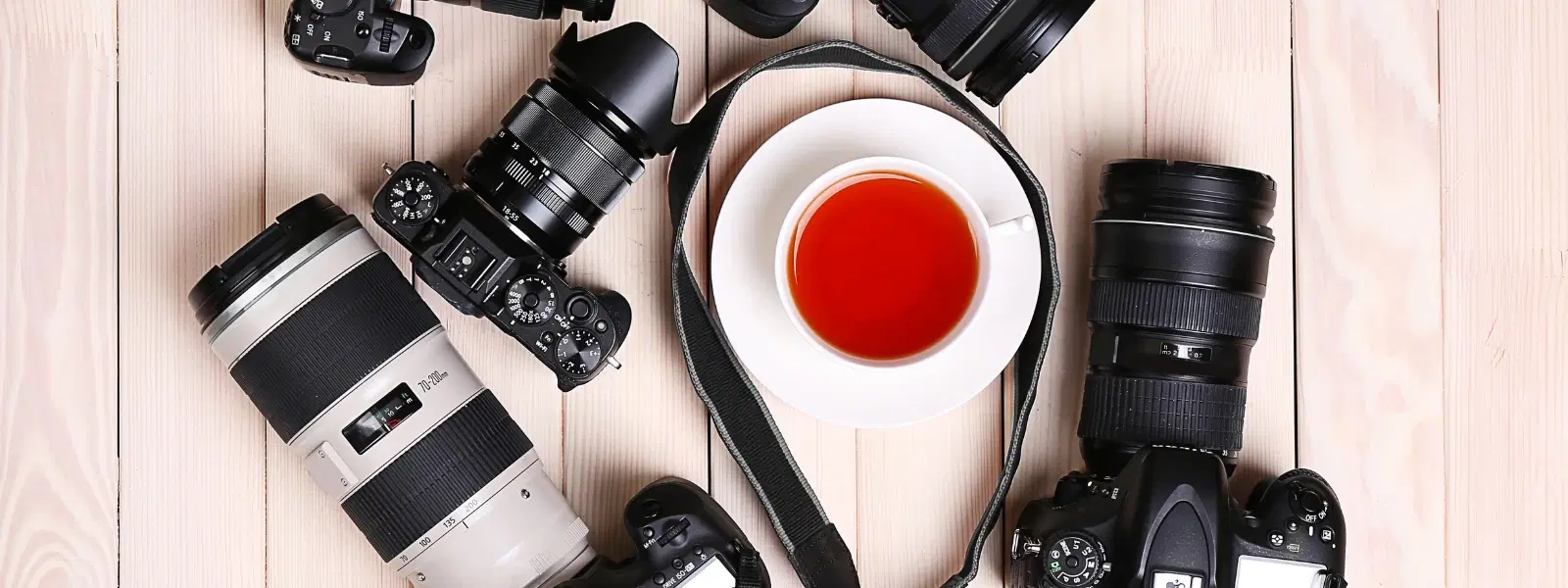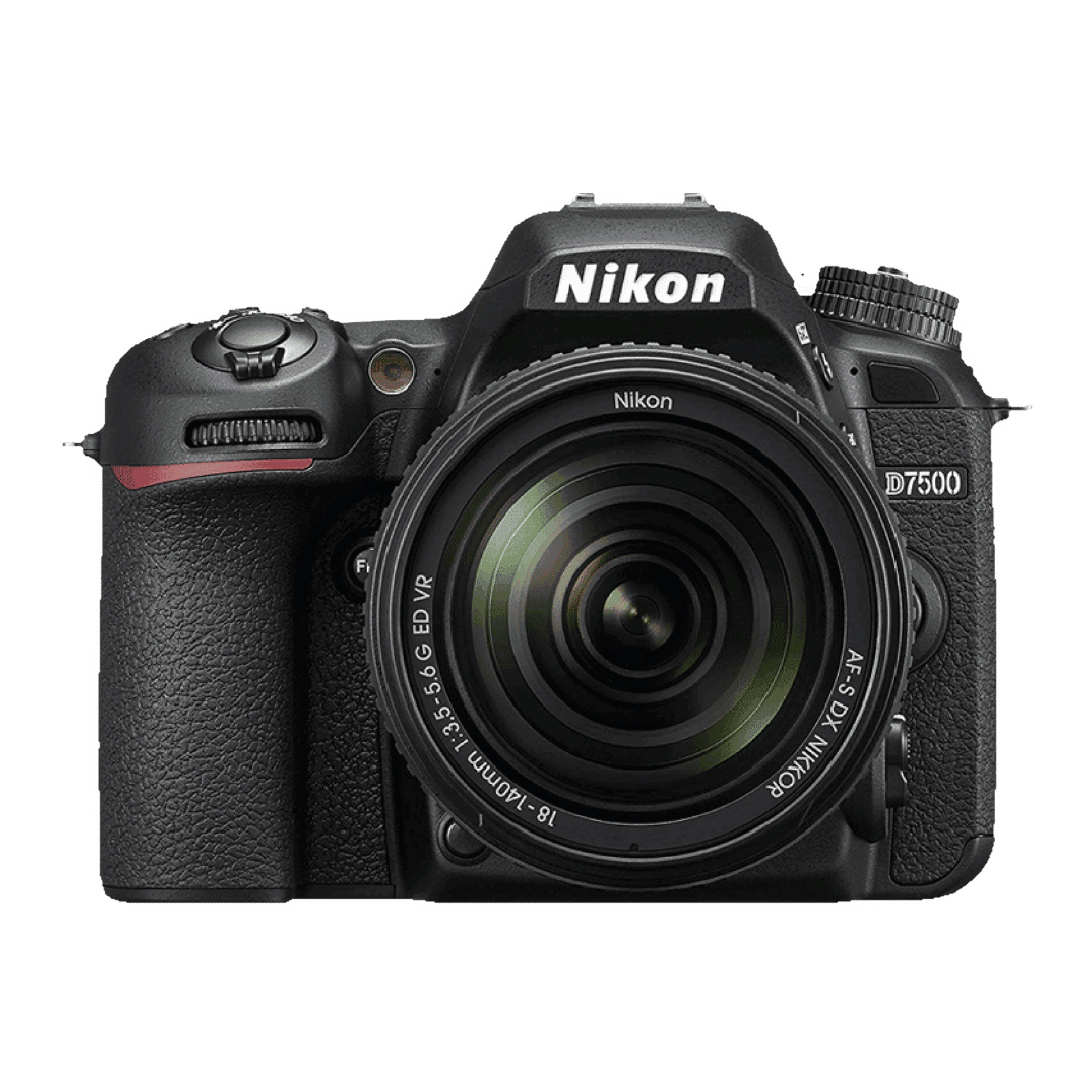
Consumer Electronics
•04 min read

Buy Nikon D7500 20.9MP DSLR Camera (18-140 mm Lens, 23.5 x 15.7 mm Sensor, Game Changing Resolution) online at best prices from Croma. Check product details, reviews & more. Shop now!
Choosing the right DSLR camera can be overwhelming, especially when balancing the fine details of image quality. For many aspiring photographers, the choice often narrows down to models like the Nikon D5600 and Canon 200D. This DSLR image quality comparison delves into what makes each model excel in areas such as photo resolution, clarity, and overall image processing, ensuring that you can make an informed decision based on your specific photography needs. Additionally, shopping for these models on Tata Neu allows you to earn NeuCoins rewards, adding value to your purchase.
When we talk about DSLR image quality, several aspects come into play: resolution, clarity, sharpness, and dynamic range. These factors determine not only the detail captured in your photographs but also how well the camera performs in various lighting conditions. The sensor size is crucial, and so is the image processor that interprets the data from the sensor. Both the Nikon D5600 and Canon 200D boast 24.2MP APS-C sensors, meaning they offer a robust foundation for capturing high-definition images. Their image processing units are engineered to deliver images that are crisp and vibrant, with each model having its unique strengths in scenarios such as low-light environments or high-contrast scenes. The figures referenced here are based on recent evaluations and industry-standard tests.
These cameras have earned a reputation among photography enthusiasts, especially those new to DSLR photography. The Nikon D5600 is well-regarded for its impressive dynamic range and the ability to perform exceptionally in low-light conditions, whereas the Canon 200D is celebrated for producing vibrant colours and a user-friendly interface. Budget-conscious photographers looking for a reliable entry-level DSLR often find both models ideal for capturing professional-grade images without overspending.
Both cameras deliver a resolution of 24.2 megapixels using APS-C sensors that provide plenty of detail for both everyday photography and more critical imaging tasks. While the sensor sizes are virtually identical, performance nuances become evident in lab tests such as DXOMARK scores. These independent lab tests help illustrate how each camera handles minute details, contributing to the overall clarity in various shooting conditions.
One significant difference lies in the image processors. The Nikon D5600 uses the EXPEED 4 processor, which offers strong performance in maintaining detail in shadows and highlights. In contrast, the Canon 200D employs the DIGIC 7 processor, known for delivering user-friendly adjustments and vibrant colours out-of-the-box. These processors impact how each model handles low-light conditions and high-contrast scenes, ensuring that the final images remain clear and true to life even under demanding scenarios. (EXPEED 4 is a processor known for its excellent low-light performance, while DIGIC 7 excels in colour rendering.)
Sharpness in photos is essential, especially for photographers aiming to capture every intricate detail. This DSLR image quality comparison reveals that sharpness tests have shown the Nikon D5600 has a slight edge when it comes to capturing finer details, while the Canon 200D consistently produces images that are rich in colour and tonality. Both cameras offer impressive capabilities, yet your choice might depend on whether you prioritise shadow detail and clarity or a more naturally vibrant look.
The ability to capture a wide range of light and dark tones is known as dynamic range, which is an important consideration for landscape and portrait photography. The Nikon D5600 often excels with a broader dynamic range, meaning it can capture more detail in both the highlights and shadows, which is essential for images with high contrast. On the other hand, the Canon 200D is often praised for its superior colour accuracy, making it particularly adept at rendering natural skin tones and lively hues in a range of shooting scenarios.
For those interested in portrait photography, both models offer advantages. The Canon 200D’s sensor works well for natural skin tones and pleasing bokeh effects, while the Nikon D5600’s strong dynamic range makes it an excellent option for more challenging lighting conditions. For action shots, the autofocus systems of both cameras are reliable, though each has its subtle differences in precision and speed. When shooting in low-light scenarios, photographers might notice that the Nikon D5600 shows marginally lower noise levels compared to the Canon 200D, leading to clearer images under challenging conditions.
Expert Tip: Did You Know?
Nikon cameras typically excel in dynamic range and low-light performance, while Canon DSLRs are renowned for their user-friendly colour profiles and skin tone accuracy. Consider your primary photography needs before deciding which model suits you best.
Feedback from the photography community reveals that both the Nikon D5600 and Canon 200D have their own distinct advantages. Photographers who prioritise a robust dynamic range and strong performance in low-light conditions often lean towards the Nikon D5600. In contrast, those who prefer straightforward handling and consistently vibrant images tend to favour the Canon 200D. Ultimately, the choice between the two can come down to personal preferences and the specific requirements of your photography style.
In side-by-side comparisons, images taken with the Nikon D5600 exhibit exceptional detail and balanced light distribution across various settings. The Canon 200D, meanwhile, produces images with naturally vibrant colours and sharp contrast. Additionally, both cameras offer commendable video recording capabilities. The Nikon D5600 records Full HD 1080p videos with clear detail, making it suitable for casual videography, while the Canon 200D offers a user-friendly experience for those new to video shooting.
Both cameras offer excellent image quality, but the Nikon D5600 excels in dynamic range and low-light conditions, while the Canon 200D provides more vibrant colours and user-friendly controls.
It depends on your priorities. Nikon tends to outperform Canon in dynamic range and sharpness, while Canon is better at colour reproduction and skin tones.
While there are options with enhanced features, the Nikon D5600 remains a standout choice for entry-level DSLRs with its balanced performance.
Yes, the Nikon D5600 records Full HD 1080p videos that offer excellent detail and clarity, making it a viable option for those engaging in casual videography.
In summary, both the Nikon D5600 and Canon 200D serve as exceptional entry-level DSLRs, each with its unique strengths. Nikon's advantage in dynamic range and detail makes it an appealing option for those who capture scenes with variable lighting. Conversely, Canon's emphasis on vibrant colours and user-friendliness offers a reliable choice for photographers who value natural colour reproduction and ease of use. Ultimately, your choice should reflect your specific photography needs and style. For those tapping into holistic rewards across shopping, there is also the added benefit of earning NeuCoins on Tata Neu, making every purchase a step towards smarter savings. With the convenience and trust offered by the platform, including express delivery and unmatched after-sales support, you can confidently explore further technological innovations and photography gadgets to enhance your creative journey.